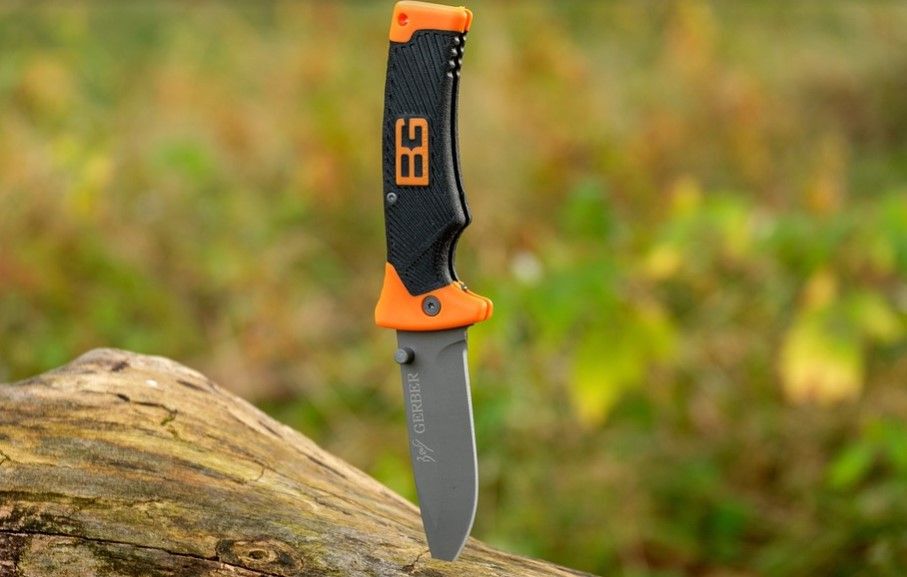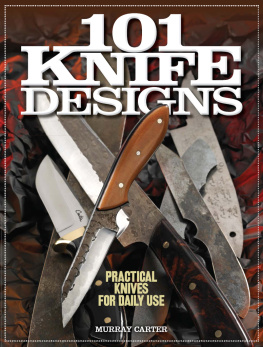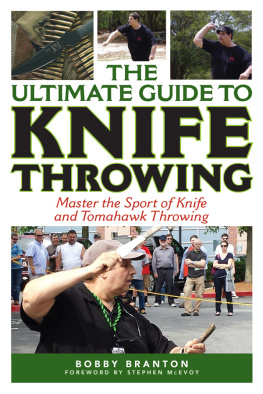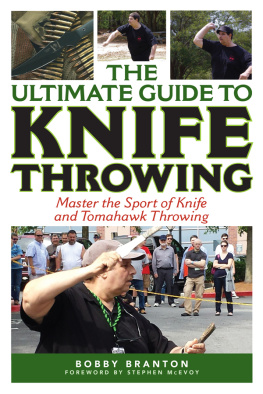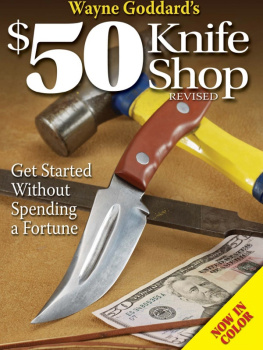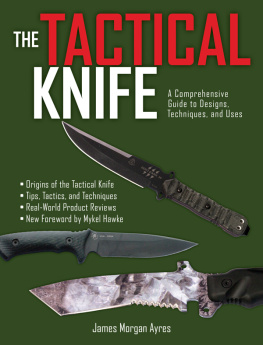KNIFE MAKING
The Complete Tutorial Guide for Beginners and Pro to Making Knives with Forging Skills Tips and Tricks
Joe
Edwards
Copyright 2021 Joe Edwards
All rights reserved.
It is not legal to reproduce, duplicate, or transmit any part of this document by either electronic means or in printed format. Recording of this publication is strictly prohibited
Disclaimer
The information in this book is based on personal experience and anecdotal evidence. Although the author has made every attempt to achieve an accuracy of the information gathered in this book, they make no representation or warranties concerning the accuracy or completeness of the contents of this book. Your circumstances may not be suited to some illustrations in this book.
The author disclaims any liability arising directly or indirectly from the use of this book. Readers are encouraged to seek Medical. Accounting, legal, or professional help when required.
This guide is for informational purposes only, and the author does not accept any responsibilities for any liabilities resulting from the use of this information. While every attempt has been made to verify the information provided here, the author cannot assume any responsibility for errors, inaccuracies or omission.
Contents
INTRODUCTION
The concept of knife making involves the holistic process of making knife from the first stage and then to the completion stage. By way of extension, selling the produced knives in any market or store is also part of the knife making process. Presently, the growing demand for knife is beyond the supply of knife, and this is because of the growing population of humans. Knife is an indispensable tool needed for our everyday activity, thus knife making is a profitable business. You can decide to produce for your personal use and save yourself the expenses of purchasing at a high rate from the knife market. Readers can decide to either become a commercial knife maker or just a knife maker that makes knife for his personal use, after reading this book.
CHAPTER ONE
What is knife making?
The process in which materials like steel, metal or iron, passes through some stages of blacksmithing, such as heating, forging, filing and many more and comes out in its final form as a knife, is knife making. Aside from the fact that knife making has to do with the conversion of blades, steel, metal or iron into a knife, through some process. The designing of handles, tangs, putting of designs on the knife, is also a holistic definition when we talk about knife making. Those who engage in knife making are known as blade smiths, hence knife making is the process in which blade smith produces knife via some selected procedures, for instance the combination of sequence that consists of stock removal and welded lamination.
Just like we have stated earlier in the paragraph above, knife is a product of carbon, steels, metals and irons, and this is possible because of the craftsmanship of the blade smith. One major reason why knives are produced is to enable people to cut through things. Say for instance, food items, clothes, killing of livestock animals and so forth.
History of knife making
There is no specific narrative that tells us the history of knife; this is because many people have their own stories as regards knife history. There is no specific date that one can claim to be the origin of knife, neither can we come to a conclusion that knifes originated from a particular area on earth, it would be a fallacy of history on our path if we make that conclusion. The most important thing is that we would give an account on the history of knife, based on the generally accepted view concerning knife history, and also combine it with some distinct views of people.
There is an obvious proven fact that those who began to use knifes lived in the cage, some people called them cave men. They were the earliest set of people who started civilization after the Stone Age days. These men lived thousands of years ago, and they lived before Homo erectus, Neanderthals and modern men.
Many reasons abound as to why the cave men fashioned out what we call today as knife. Due to the fact that they fed on animals at that period, and there was a necessity to create an object that would help them kill animals, they began to combine materials until they came up with what is known as a knife. Hunting was their source of livelihood, thus they needed an object, so sharp to pierce through or cut through animals, including wild and domestic. Furthermore, there was no such thing like a house as we see in our present dispensation, where our houses serve as a protection from wild animals. They lived majorly in the cave and sometimes in the thick forest, there were many possibilities that during their sleep, wild animals and creepy creatures would attack them and that was also a major reason why they came up with the idea of knife; for self-defence.
As men continued to evolve, the production of knife also evolved, and as new generation of men came, they came up with their ideas of the best ways to make knives, to serve their purposes. It is important to note that the evolution of knife was possible because as time went by, men faced new challenges and they had to create knives that could solve the challenges. For instance, making knives to fight war is different from making knives to kill wild animals; the former requires much sophistication of the knife unlike the other because they served different purposes.
Between the periods of 5000-2000 BC, people that engaged in knife making had already designed ways to sharpen their knives, in order for the knives not to get blunt and also to get sharper ends. Handles was also invented during that period.
Copper and bronze was originally used to manufacture knife blades between the periods of 300-700 BC, this was an obvious advancement of knife and it was unlike what their predecessors used. The foregoing assertion came about, as a result of a research study.
And as humans continued to evolve, knife making also evolved. In 1000 BC, men began to use metals to produce knives unlike the use of copper and bronze during the periods of 300-700 BC. The use of metals became the mainstay in the knife industry, because the blade smiths believed that metals when used to produce knife are stronger and long lasting. Fast forward to recent years, men have also tried other materials for knife making; this is in quest for a sharper and stronger knife.
Currently, blade smiths all over the world use varieties of materials like carbon steel, alloy steel, Damascus steel, tool steel, and stainless steel so that those who want to get a knife would have varieties to pick from, according to their purpose. More recently, studies and inventions have shown that knife makers can use obsidian, titanium, alloys, plastic, cobalt, and ceramics for knife production. Generally, some of the mentioned materials are used to produce special purpose knives, secondly people who may purchase it may find difficulty in maintaining the knife, and hence stainless steel is commonly used because stainless steel has a high tendency to be maintained easily.
How does knife making work?
There are, to a large extent, technicalities in the craft of knife making. Blade smiths apply both complex and simple methods of knife making in the production of knives. Amongst different knife making techniques are making a knife by forging and making a knife by stock removal, they are the commonly used by blade smiths. Below is a vivid illustration of how knife making works:

